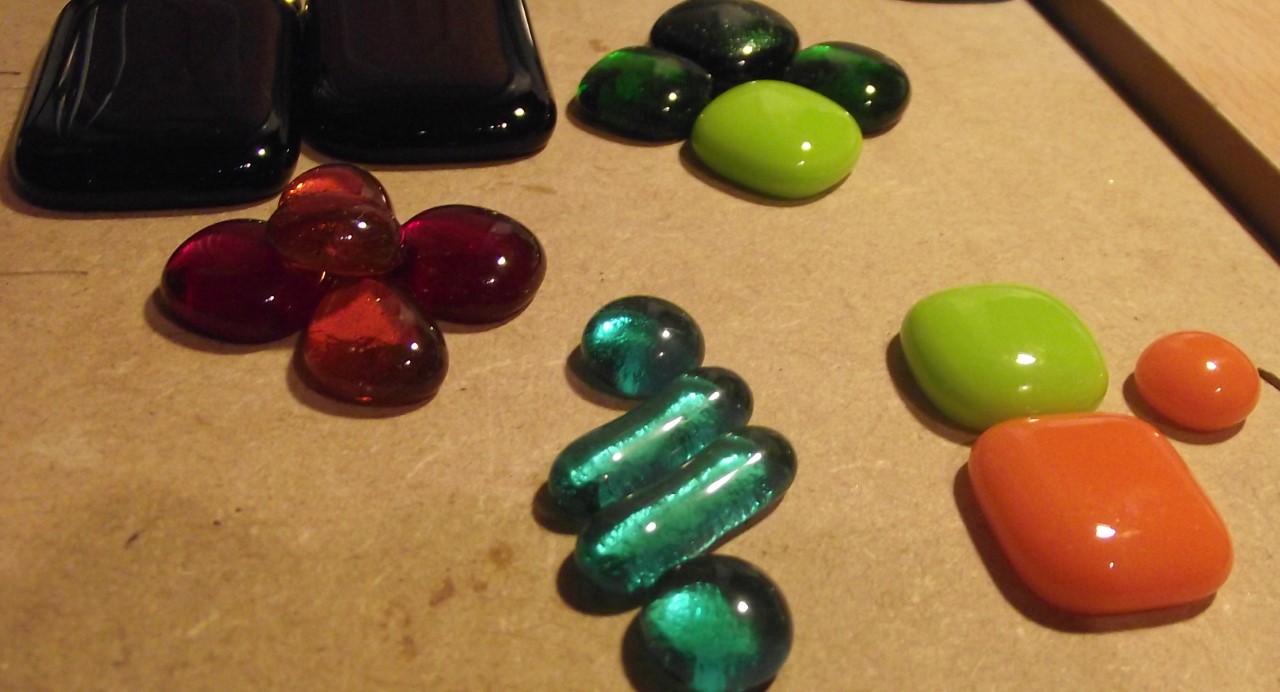The jewellery is made from glass that is cut, assembled and then heated in a kiln to approximately 800 degrees Celsius and then cooled slowly to prevent cracking. The glass can be clear or opaque, plain or coloured, smooth or textured and may be treated in various ways to give different effects. Some colours are strikers, glass that only reveals its full colour after heating in the kiln.
Coloured glass has small amounts of metallic pigments that cause the colour that you see, dark blue glass comes from cobalt, gold causes a red coloration- hence red glass has always been more expensive and valued.
The sparkle in jewellery often comes from the use of dichroic glass, consisting of a series of thin films deposited on glass, whilst inside a vacuum chamber.
The technique was developed to create a protective layer on windscreens for aircraft and spacecraft, but was rapidly seized on for decorative purposes by glassmakers. Dichroic glass has the property of having two colours (hence Di and Chroic) one for transmitted and one for reflected light and may give varying effects when viewed from different angles.
Dichroic coatings may also be plain, patterned, etched or deposited on clear or black glass and smooth or textured. The choice also is available to leave it on the surface of the glass where it forms a satin surface or to encase it under another glass, giving a more sparkly effect and a more 3D appearance.
Glass also comes as stringer - thin rods, and frit - crushed glass in 5 sizes which all give different effects. Metals can also be added to the glass, usually as foil or leaf, often gold, silver or copper
